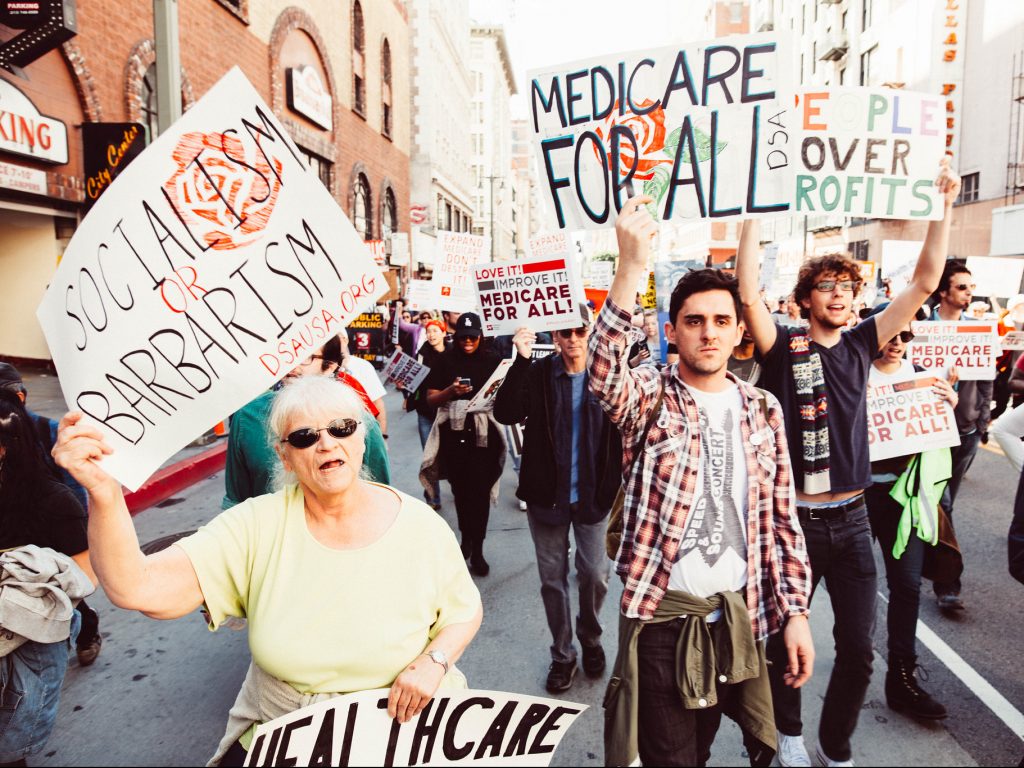The pandemic has caused state and local government budget crises across America, with estimates for the cumulative budget shortfalls in the hundreds of billions. As a result, mayors, county administrators, and governors have asked for federal assistance to help, as the $150 billion in restricted funds allocated in March’s CARES ACT has proven inadequate.
Currently, discussions about federal assistance for state and local governments assumes that that assistance must come in the form of either: (1) direct payments or loans from the federal government to state and local governments; or (2) buying up local and state government debt. But these are not the only forms of relief possible. Another form of relief would be for the federal government to take on costs that are currently borne by state and local governments. Put another way: To plug state and local government budget holes, instead of having the federal government increase state and local government revenue (transferring money from the federal government to the state and local governments), the federal government could decrease state and local government costs (transferring costs from state and local governments to the federal government).
One such cost that could be transferred from local and state governments to the federal government is public employee health insurance costs. As of June 2020, local and state governments employ about 18 million public employees. In 2020, according to estimates from the Centers for Medicare and Medicaid Services, state and local governments are set to spend $203 billion on employer contributions to private health insurance premiums for those employees. This is the second largest driver of state and local government health care costs, behind Medicaid.
To relieve state and local governments of this cost—and free up over $200 billion across their budgets—the federal government could incorporate all state and local public employees into a federally-funded, Medicare-administered national health insurance plan. Under such a plan, the state and local governments would no longer pay for their public employees’ health insurance—the federal government would.
This type of relief is a more cost effective form of federal relief than direct payments. If the federal government pays states $203 billion in direct payments, $203 billion is spent by the federal government and a $203 billion benefit is gained by state and local governments. But if the federal government acquires $203 billion in health care costs, a $203 billion benefit is gained by state and local governments, but a full $203 billion need not be spent by the federal government to maintain the same level of service. Why? Because Medicare is cheaper to administer than private insurance: it has lower overhead costs, does not need to pay out profits, and is able to negotiate lower reimbursement rates.
Two Added Benefits: (1) Building Towards Medicare for All and (2) Promoting Public Employment
In addition to the cost effectiveness, there are two other benefits to this form of federal relief. First, adding millions of workers to a federally-funded and administered program would help incrementally build towards a Medicare for All system. Various progressive thinkers are discussing ways to expand Medicare given a Biden administration uninterested in pursuing full Medicare for All: lowering the Medicare age to 55; adding children to Medicare; opening up Medicare with a public option to purchase into it; putting all people in non-Medicaid expansion states below 138% of the poverty line on Medicare; combining Medicaid, Medicare and CHIP into one program, and more. A “Medicare for All Public Employees” could be another such margin to push on, further normalizing Medicare for All and making future pushes for Medicare for All a smaller lift.
Second, federalizing public employee health benefits makes public employment more attractive, for all forms of public employment—such as being a public school teacher, public bus driver, firefighter, administrator—could come with guaranteed high-quality health insurance, de-risked from local and state austerity. It would also make increasing local and state government workforces less expensive, for cities and states would not have to pay for health premiums. Finally, in contract negotiations between public employees and employers, employers would no longer have the bargaining chip of lowering health care coverage.
Addressing Two Concerns: (1) Plan Quality and (2) Transition Timelines
There are two major concerns with rolling up public employee health care plans into a single Medicare-administered, federally-funded national public employee health care plan.
First, there may be a concern that a national program would provide lower-quality coverage than current programs. This could be addressed by designing the program to provide coverage that exceeds local and state plans with the highest quality coverage. For example, the federal public employee health care plan could be written to include dental and vision coverage. Also, if the plan’s premiums were fully paid for by the federal government, many local state public employees would immediately receive a benefit from the nationalization of their current plans, for they would no longer have to pay an employee premium.
Second, there may be a concern that a national program would not be stood up in time to plug COVID-related budget holes. This could be addressed by having the federal government pay premiums in current public employee health plans until the national plan is stood up.
In summary, a “Medicare for All Public Employees” could achieve multiple goals at once:
- Provide federal assistance to local and state government budgets in a cost efficient way.
- Provide local and state public employees with stable, high-quality health insurance.
- Move the federal government piecemeal toward Medicare for All.

